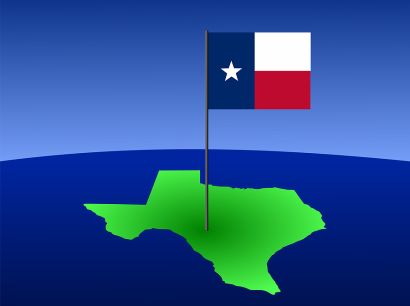This Week's Story
Americans receive a terrific opportunity to settle in Tejas.

This Week’s Story relives American history and the Bible through brief inspiring stories presented on mp3 audio recordings and text for reading.
You Do Not Own Me! part one
Texas! What do you call someone from Texas? A southerner? Ah, probably not! A Texan? Good chance that will stick, unless you are talking to a newbie “from the “outside.”
Find some native Texans and ask, “Hey, where are you from?”
“Texas. You could say we’re full-blooded Texans.”
Did you hear that allegiance to their home state?
Drive across the state. There’s plenty of space to explore! 267 thousand plus square miles! Texas is the second biggest state in the U.S. You will see driveways leaving highways or blacktop roads. Then often you’ll see tall arches spanning individual driveways. On each is the name of a ranch or farm located a goodly space down the private driveway. Two flags are streaming. One is the Texas state flag and the other is the United States flag. They wave pride in ownership and independence, belonging in a state and nation!
Back in 1821 Americans received a terrific opportunity to settle in Texas, the vast area originally called Tejas, meaning friends. It was
owned by Mexico. Mexico had become independent of Spain, but there was a big problem. Mexico could not stop bands of Comanche bandits from terrorizing Mexican peasant farmers in Texas.
The Mexican government found a creative solution suggested by American Stephen Austin: “Open the Texas territory to Americans. Tell them, “You can settle here, and have self-rule! You can buy land cheaply. Even though Mexico has outlawed slavery, you can bring your slaves. Your rights will be the same as Mexican citizens have, as granted by the new Mexican constitution.”
By 1836 30,000 Americans had gladly accepted the offer. They worked hard, farmed, and raised cattle. They got along with the Mexican government, but not the Comanche Indians. The Americans were expert marksmen and their rifles had great reach. A treaty was made with the Comanches. When it was broken, the Texans raised a force and tracked the Comanches down. The attacks ceased. Peace was undisturbed for seven years.
Then the Mexican government leadership changed. Revolutions and counterrevolutions began. Antonio López de Santa Anna regained power. Harsh changes came and the Mexican democratic constitution of 1824 was discarded.
March 1836 Texas declared its Independence from Mexico. For ten years it was the Republic of Texas.
Problems continued erupting. Could the Republic of Texas survive? Could it have an army to provide safety for its citizens? A trading partner was needed. How should borderlines with Mexico be determined? Americans split on whether or not Texas should be a slave state if annexed to the United States. Mexico absolutely did not want Texas to be part of the United States.
Regardless of battles and argument Texas was accepted into the United States of America December 29, 1845 as the 28th U.S. state.
One year later the Mexican-American War began.
There were many concerns about the excellence of the Mexican Army and the needs of the Texan military. How would there be victory?
Today our team is Todd Warren, Scott Thomas, Nathan Thomas, and Barbara Steiner.
Share the website thisweeksstory.com with your family and friends.
<< previous story] [next story >>
We invite your comments! [click here to comment]
This Week's Story is a non-profit supported by listeners. [click here to make a donation]
 click here to play audio
click here to play audio